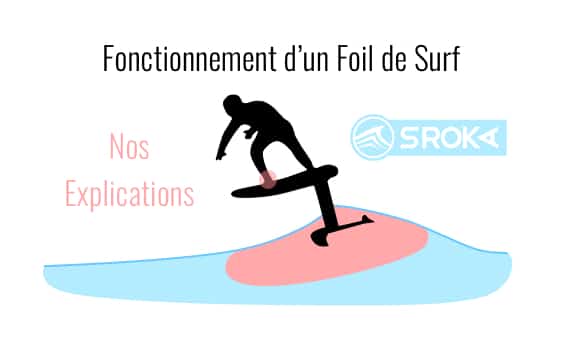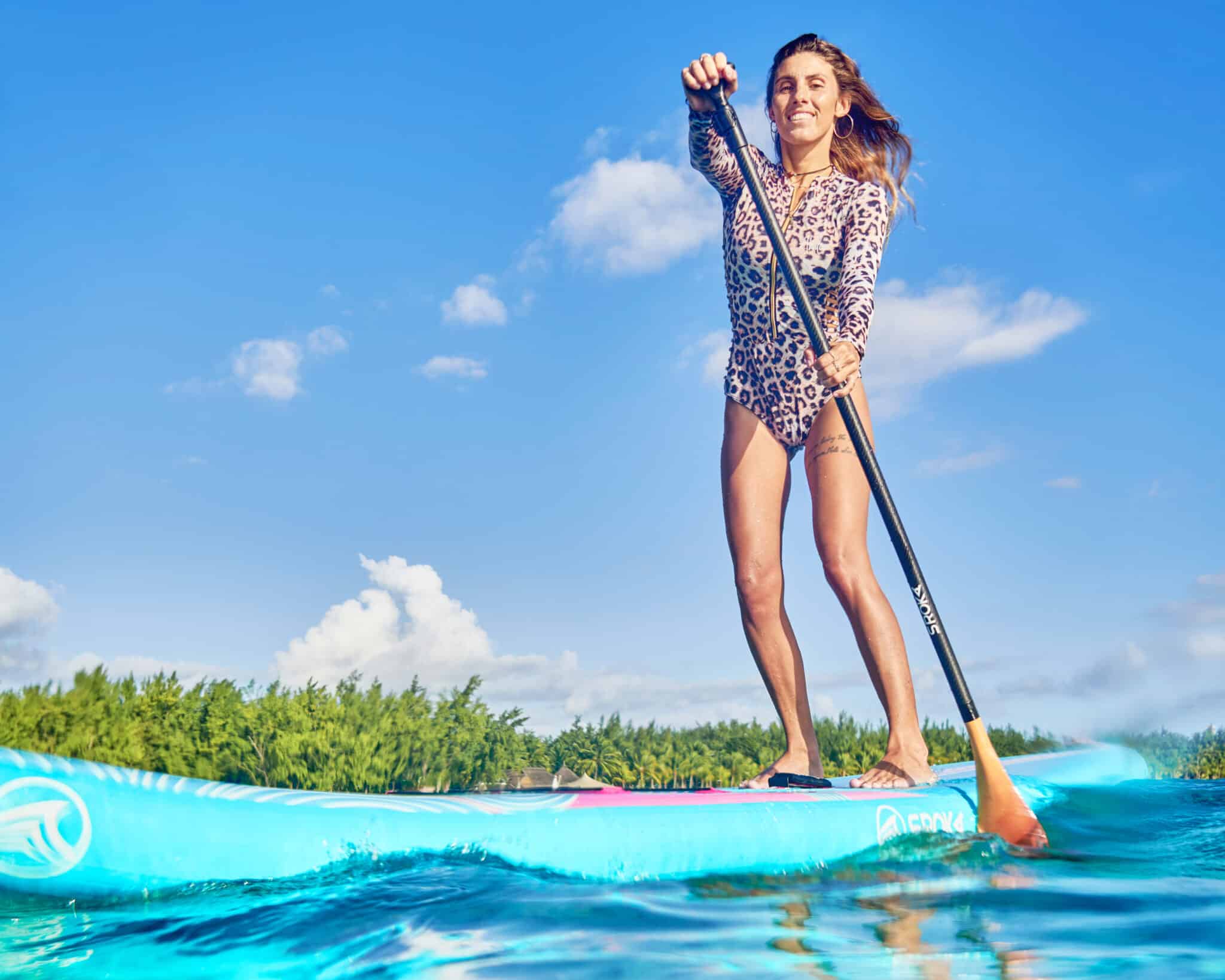Louis-Arnaud surf-foil in Mauritius, equipped with the Fast Flyer 4’6 board and the High Aspect 1190 Lift S-foil Summary Composition of a surf foil Principles …
Can you paddle board everywhere?
As the number of paddle boarders increases year after year, more and more of you want to get away from the crowded places to more remote areas. But this desire for freedom can sometimes be abruptly interrupted when you go to a spot where the practice is forbidden or impossible. To do this, We’re going to walk you through all the elements to make sure you can get your paddle board in the water without getting into trouble.
The different types of paddle boarding
There are many different types of inflatable SUP (Stand up paddle), you can practice in many situations, this variety brings its share of specificity to the models you will choose in order to adapt them to each practice.

Paddle surfing
Paddle surfing, also known as paddleboard surfing, is a variant of SUP that is practiced specifically in waves. Fans of this discipline use a shorter, more maneuverable board such as our Wave 9’5 to surf the waves while paddling.
Paddle Fitness
Paddle fitness is a discipline focused on fitness and muscle strengthening. It combines fitness exercises, such as yoga or Pilates, with the practice of stand up paddleboarding. Participants perform specific movements and exercises on their board, which adds a dimension of stability and muscle building to their workout. (note that it is necessary to equip yourself with an anchor to stop)
Whitewater paddle boarding
Whitewater paddleboarding is a more extreme discipline that involves navigating rivers and rapids. Participants must be experienced and have a good command of their board and paddle to deal with currents, rocks, and other obstacles encountered in whitewater.
Paddle touring
Paddle touring is a discipline that allows you to explore longer distances on the water, using a board specially designed for better stability and glide. Surfers can discover new landscapes, explore peaceful coasts or lakes and enjoy nature while paddle boarding.
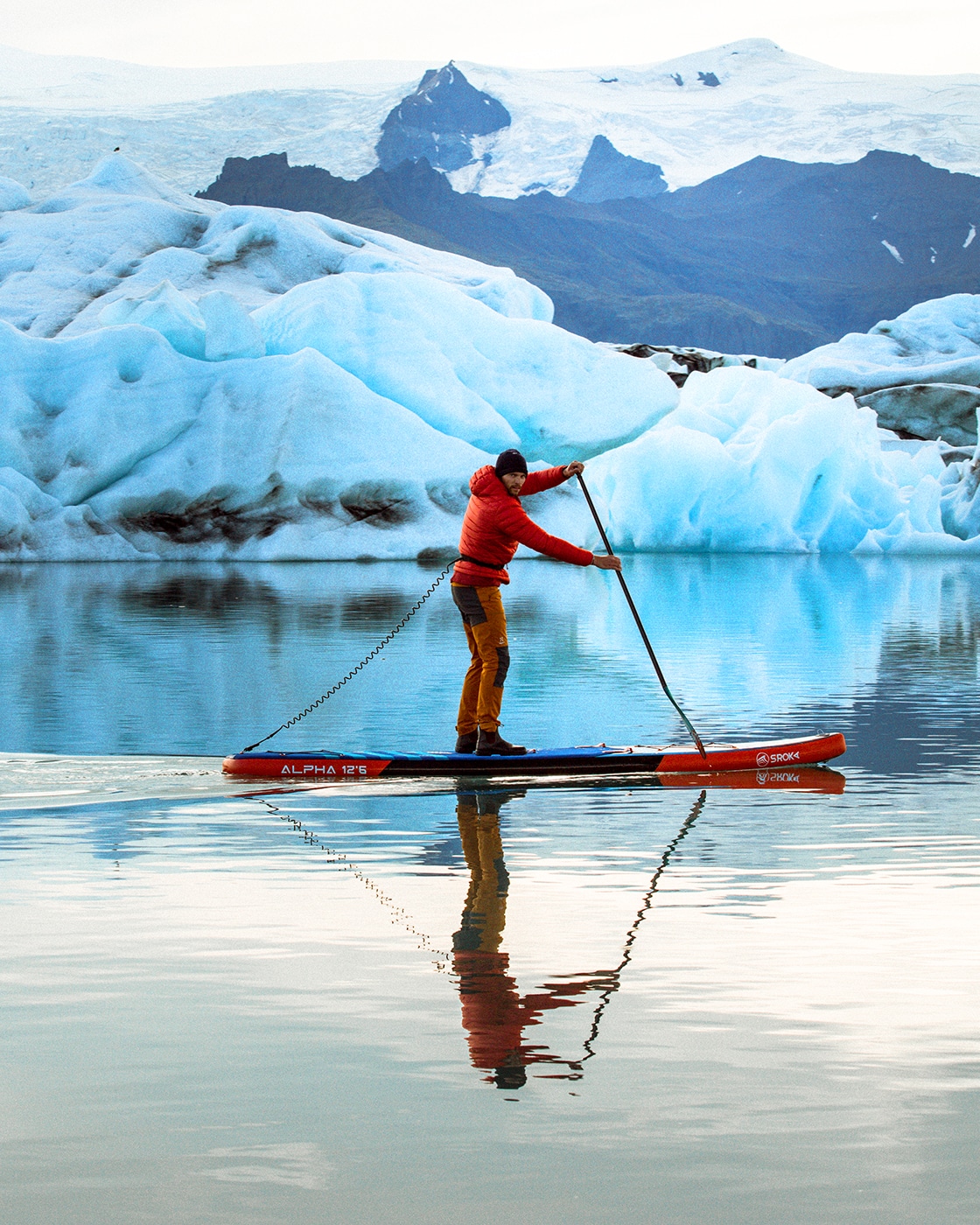
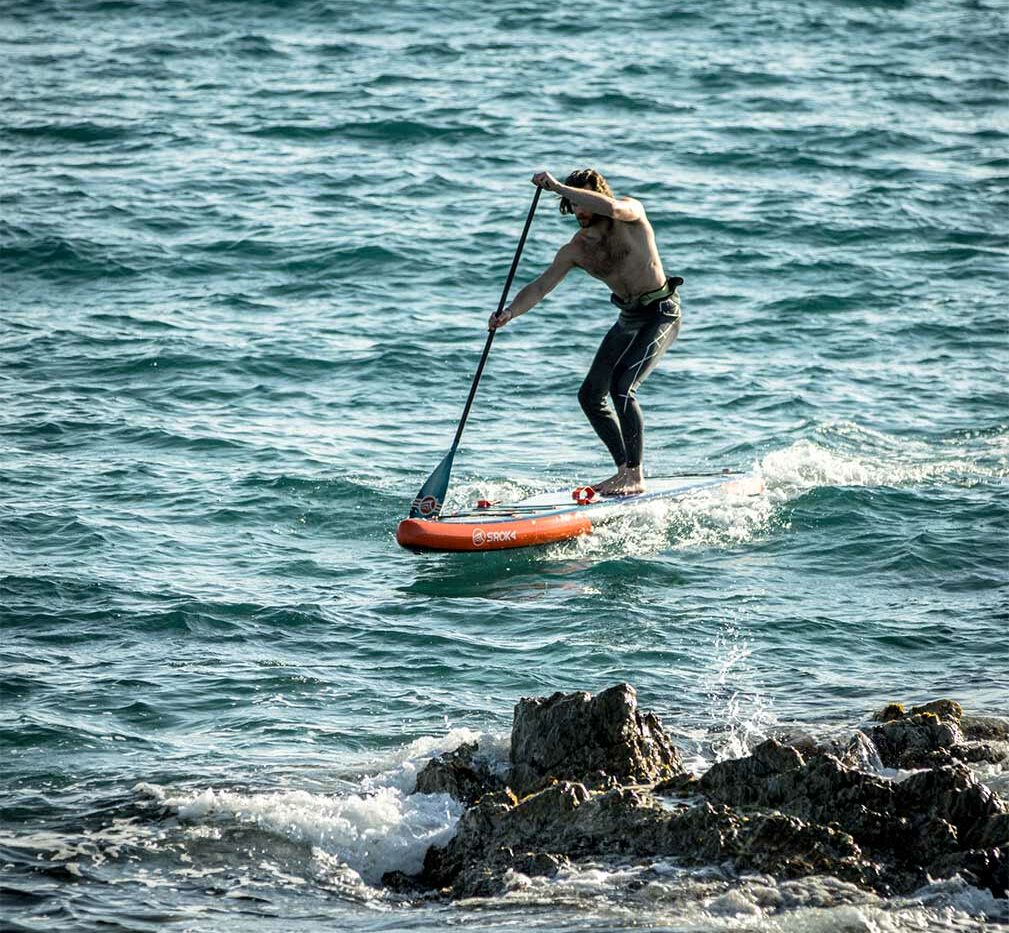
Purebred Paddle
Performance in its purest form, the goal here is to glide, without compromise. We then observe paddle boards that are often unstable but with an exceptional glide allowing you to do long distances at high speeds without effort. They are usually less than 27 inches wide and more than 13 or 14 feet long. Our Alpha 14X27 is an efficient purebred paddle board.
Places conducive to paddle boarding
Lakes & Ponds
Lakes and ponds offer many advantages for paddle boarding in fresh water. Here are some of these benefits and some recommendations to make the most of your paddling experience in these environments:
- Stability: The calm waters of lakes and ponds provide extra stability, which is ideal for beginners or those looking for a more leisurely practice.
- Ease of access: Lakes and ponds are often easily accessible, whether in parks, nature reserves, or recreational areas, making paddleboarding more convenient and accessible for everyone.
- Picturesque landscapes: Lakes and ponds often offer beautiful scenery with green surrounding nature, mountains or forests, which makes the paddle boarding experience even more enjoyable.
- Biodiversity: These environments are often rich in biodiversity, offering paddle boarders the opportunity to experience a variety of birds, fish, and other aquatic animals while paddling.
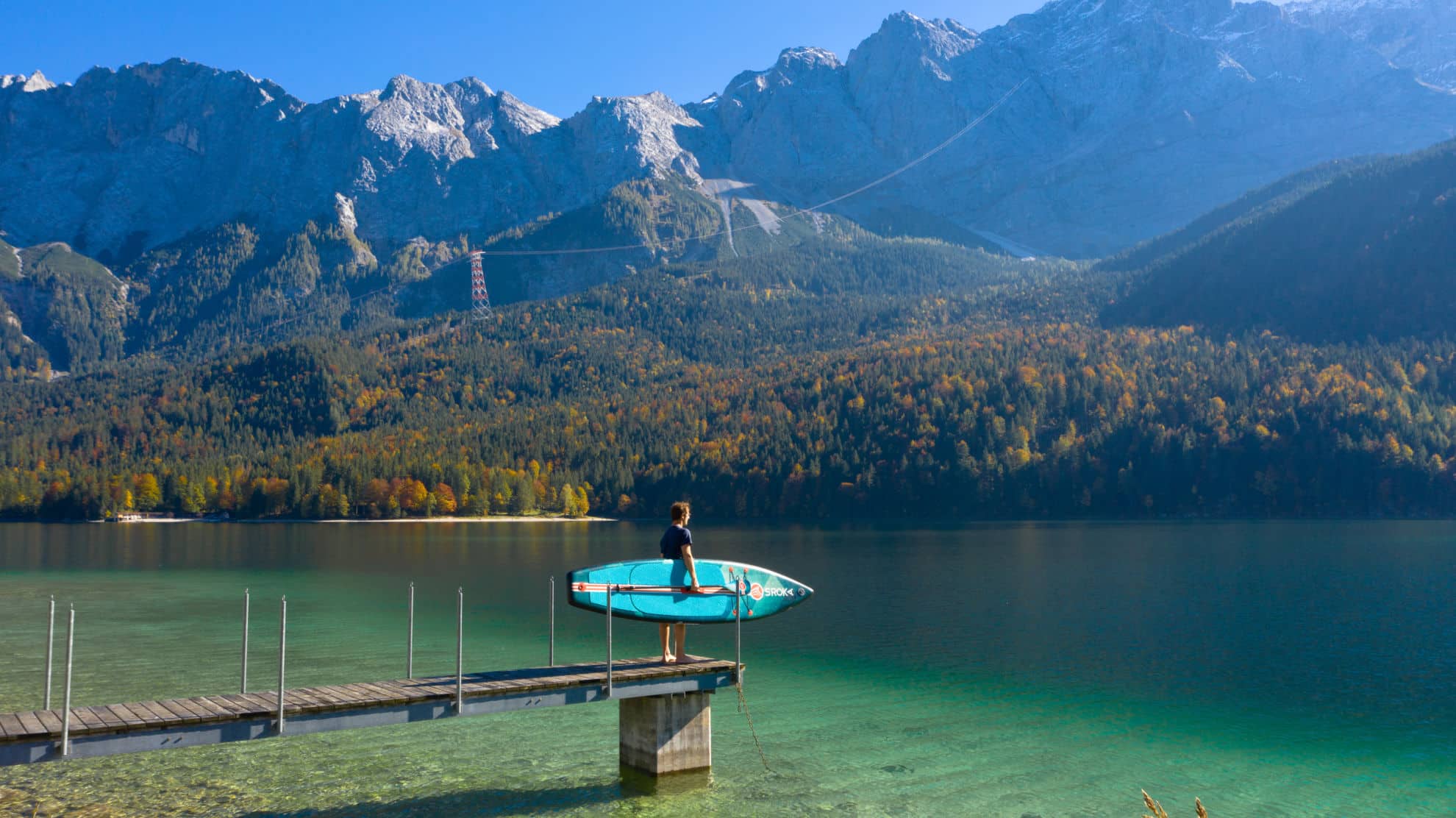
To practice paddle boarding in fresh water, here are some recommendations:
- Check local regulations: Before you get started, make sure you know the rules and regulations regarding the use of lakes and ponds in your area. Some places may have specific restrictions regarding water activities.
- Gear properly: Make sure you have the right gear for freshwater paddleboarding, including a suitable board, a quality paddle board , a life jacket, and any other necessary safety equipment.
- Respect the environment: Keep in mind that lakes and ponds are fragile ecosystems. Respect the local flora and fauna, avoid disturbing natural habitats and do not leave litter behind.
- Be aware of other users: In crowded areas, there may be other people engaged in other water activities. Be attentive to their presence, respect their space and follow the rules of courtesy on the water.
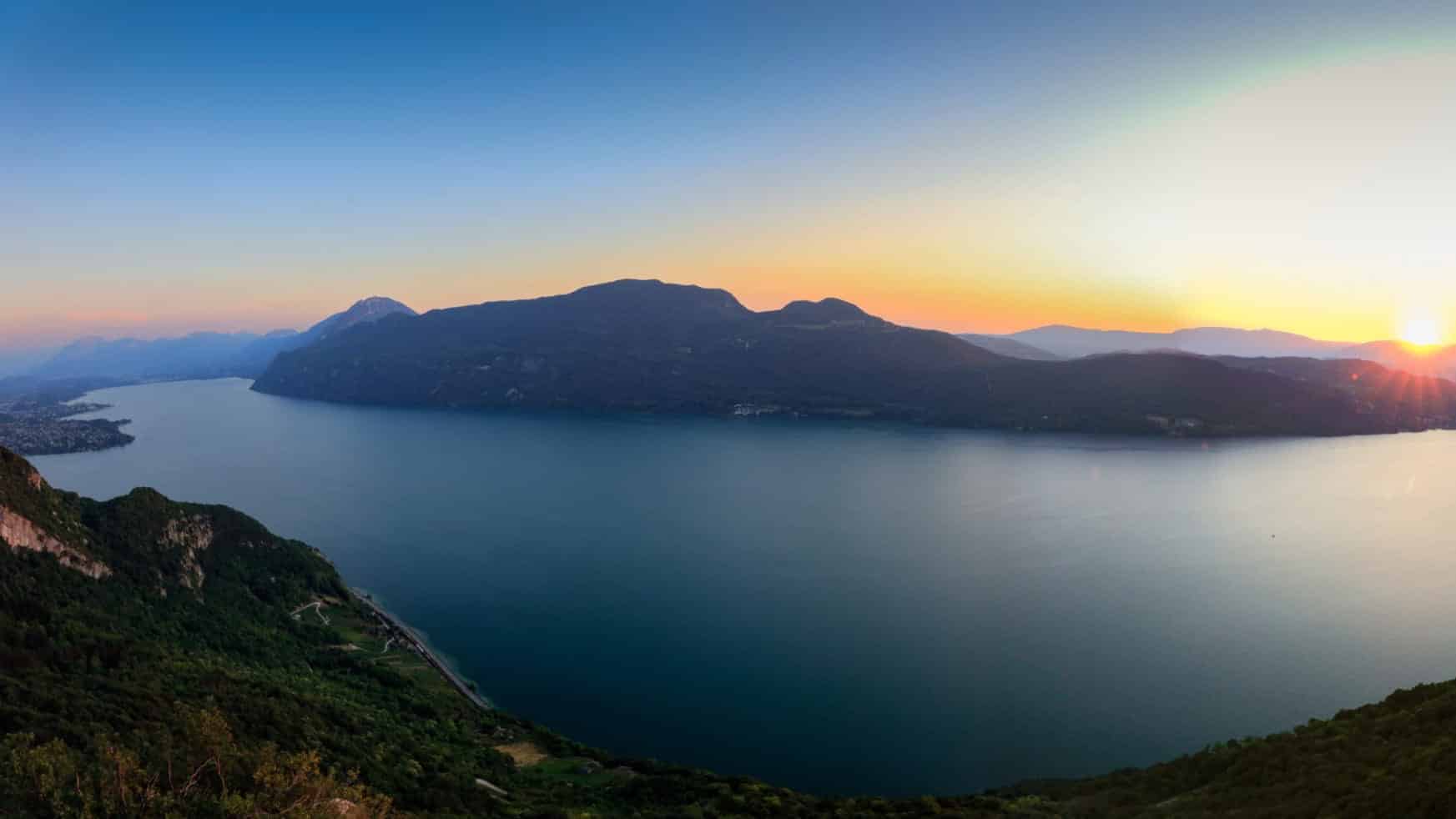
Rivers
Navigating rivers and streams while paddleboarding can be an exciting experience, but it also requires taking certain precautions and following a few tips to keep yourself safe. Here are some recommendations for navigating waterways:
- Know the skill level required: Rivers and streams can have stronger currents and more variable conditions than lakes or ponds. It’s important to know your skill level and make sure you’re comfortable with the specific conditions of a river before you jump in.
- Search for information about the river: Find out about the river or river you want to explore. Be aware of water levels, rapids, potential barriers, and access points. Check local guides, specialized websites, or talk to experts for accurate information.
- Equip yourself properly: Make sure you have equipment suitable for whitewater sailing. Use a stiff, sturdy board, wear a life jacket, a leash to attach your board to your ankle, and a hard hat if necessary.
- Learn whitewater boating techniques: Take the time to familiarize yourself with whitewater boating techniques, such as reading currents, paddling techniques suitable for rapids, and methods of recovery in the event of a fall. Taking classes or hiring an experienced guide can be beneficial in learning these skills.
- Assess weather conditions: Be aware of weather conditions before venturing out on a river. Recent rains can lead to higher water levels and stronger currents. Avoid sailing in stormy weather or when hazardous weather conditions are forecast.
- Sailing in a group: It is recommended that you sail in a group when exploring rivers or streams. Having other people nearby can help you when needed and increase your overall safety.
- Respect the environment: When navigating waterways, be sure to respect the natural environment. Avoid disturbing the local flora and fauna, take your rubbish with you and follow the conservation rules in place.
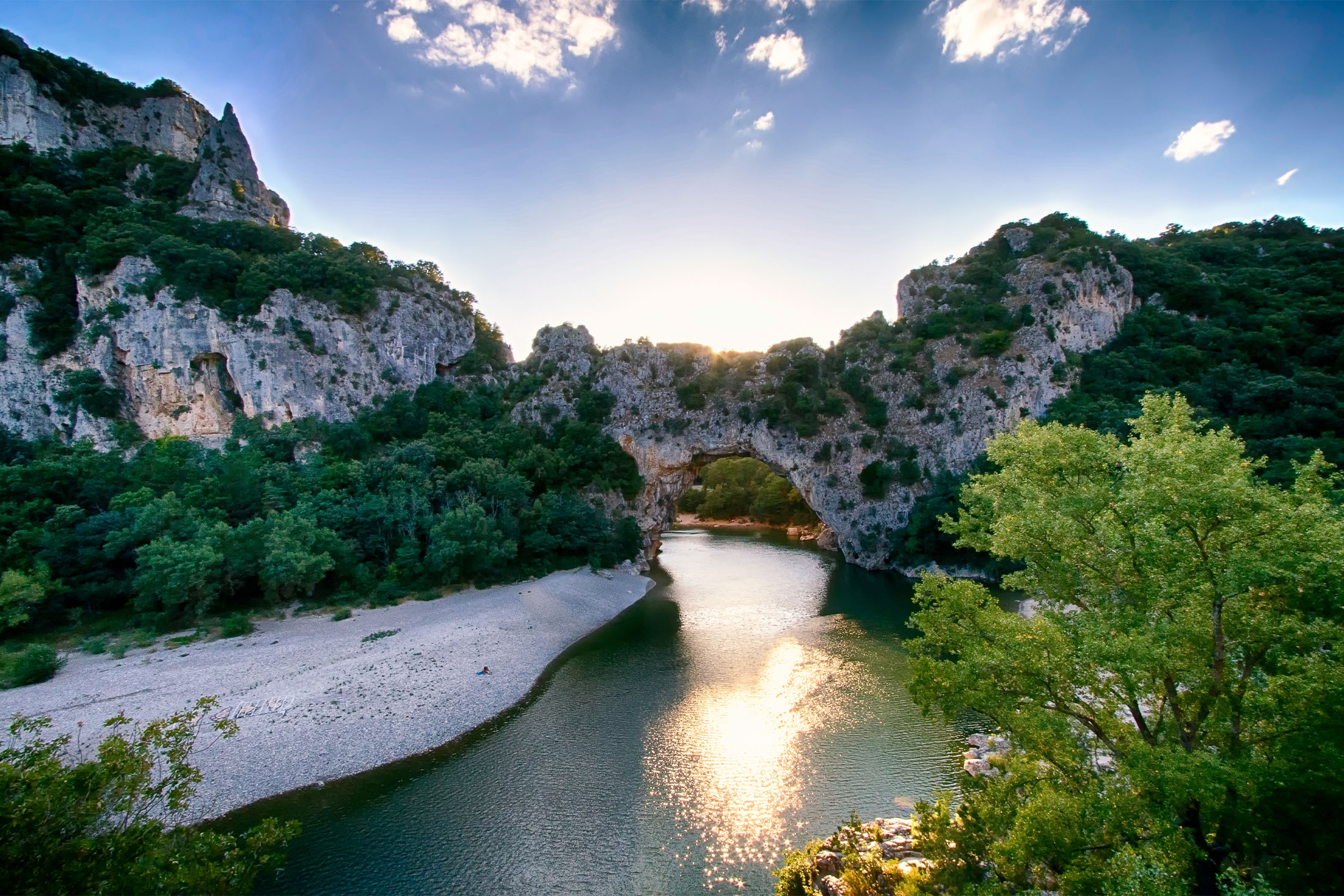
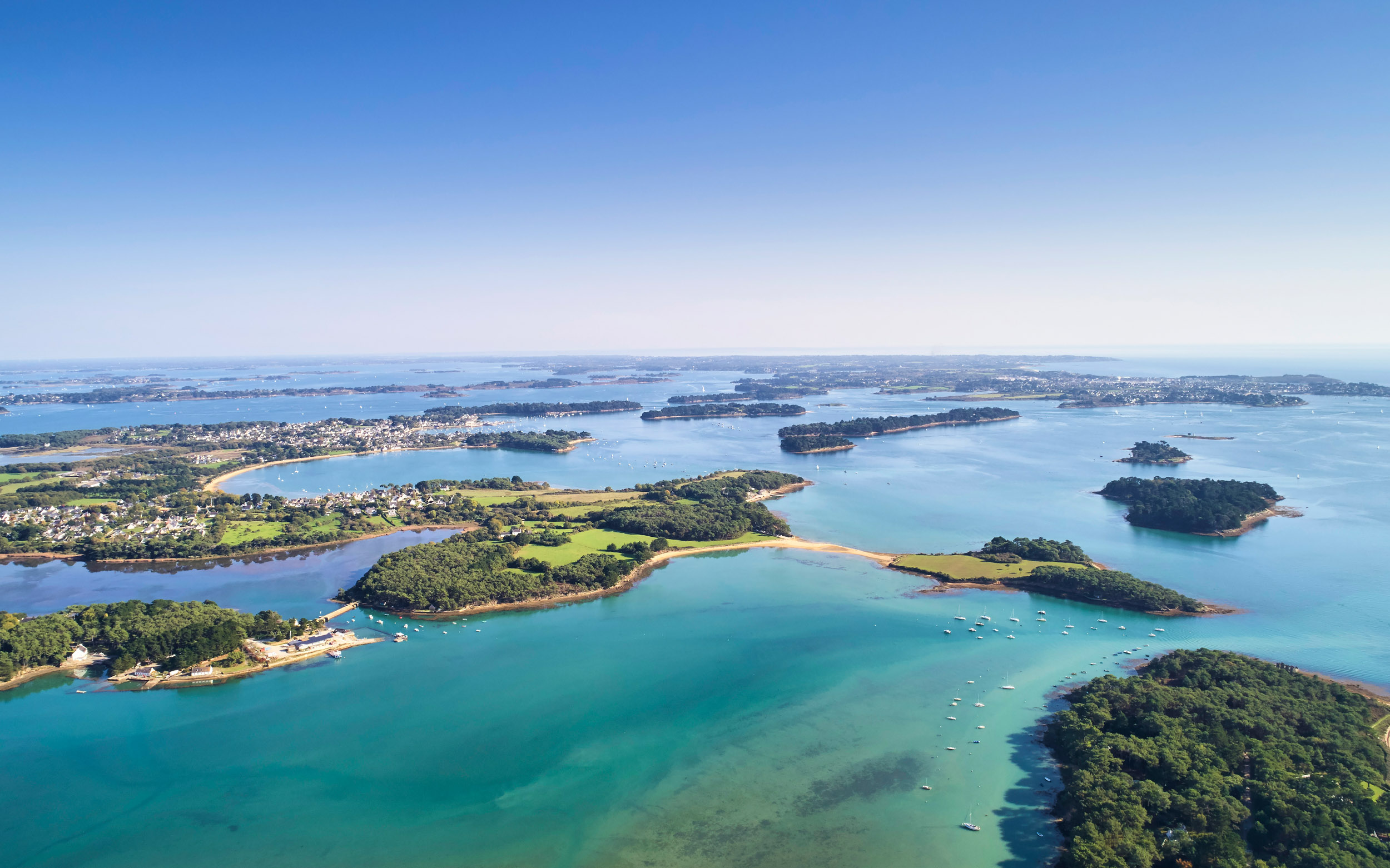
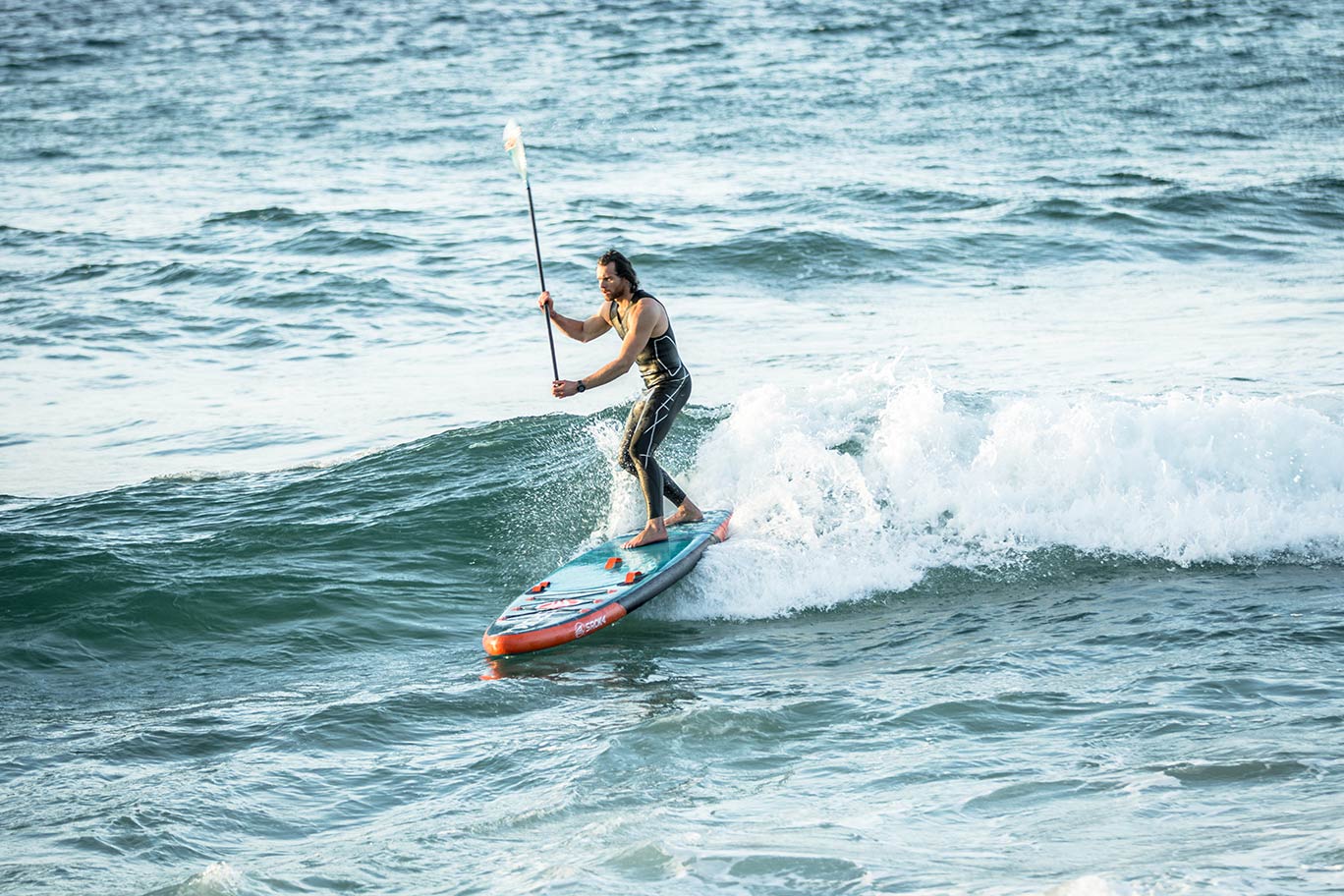
Seas and oceans
The coasts and seas offer ideal conditions for paddle surfing, a discipline that consists of surfing the waves while using a paddle board. Here are some ideal conditions for paddle surfing by the sea:
- Waves: The coasts and seas offer varied waves, allowing paddle surfing enthusiasts to enjoy a unique surfing experience. The waves can vary in size and power, providing surfers with a wide variety of conditions to practice their discipline.
- Ocean currents: Ocean currents can play an important role in paddle surfing by the sea. Currents can create more powerful waves and influence the direction of the paddle. It is important to understand and take into account the ocean currents before embarking.
- Coastal Landscapes: The coasts and seas offer stunning coastal scenery. Paddle surfers can enjoy the beauty of the ocean, beaches, cliffs and rock formations while practicing their discipline.
However, it is important to take certain precautions when paddle surfing by the sea:
- Safety at sea: Before you set off, make sure you know the rules of safety at sea and familiarize yourself with the specific conditions of the beach where you plan to surf. Learn about currents, tides, and no-go zones.
- Proper equipment: Use a wave-friendly paddle board such as our Wave 9’5 and ocean conditions. Wear a leash to attach your board to your ankle and be sure to wear a life jacket for your safety.
- Skill assessment: Paddle surfing by the sea is a more advanced discipline that requires some mastery of waves and surfing techniques. Make sure you have the necessary skills before venturing into more challenging conditions.
- Respect other surfers: When paddle surfing by the sea, it is important to respect the rules of priority and courtesy towards other surfers and users. Share the waves fairly and avoid dangerous or disrespectful behavior.
- Weather monitoring: Pay attention to weather conditions, including wind, swell, and tide forecasts.

Restrictions and regulations
- We practice sports that must respect their environment as much as possible in order to be viable and to maintain pleasant and lively playing spaces. Be citizens and avoid disturbing cash or littering. In addition, some areas are restricted to practice for ecological reasons, so find out about local regulations before jumping into the water
- Respect for other users is a priority, your Sunday or holiday paddle outing should not turn into a tragedy. To do this, respecting the rules set up on the spots is obvious. Most beaches have a 300-metre swimming area in which navigation is prohibited, so you will have to use the channels to get out of this area and move away. Apart from the self-imposed rules of courtesy, it is customary for the most experienced to make it easier for the beginner to manoeuvre.
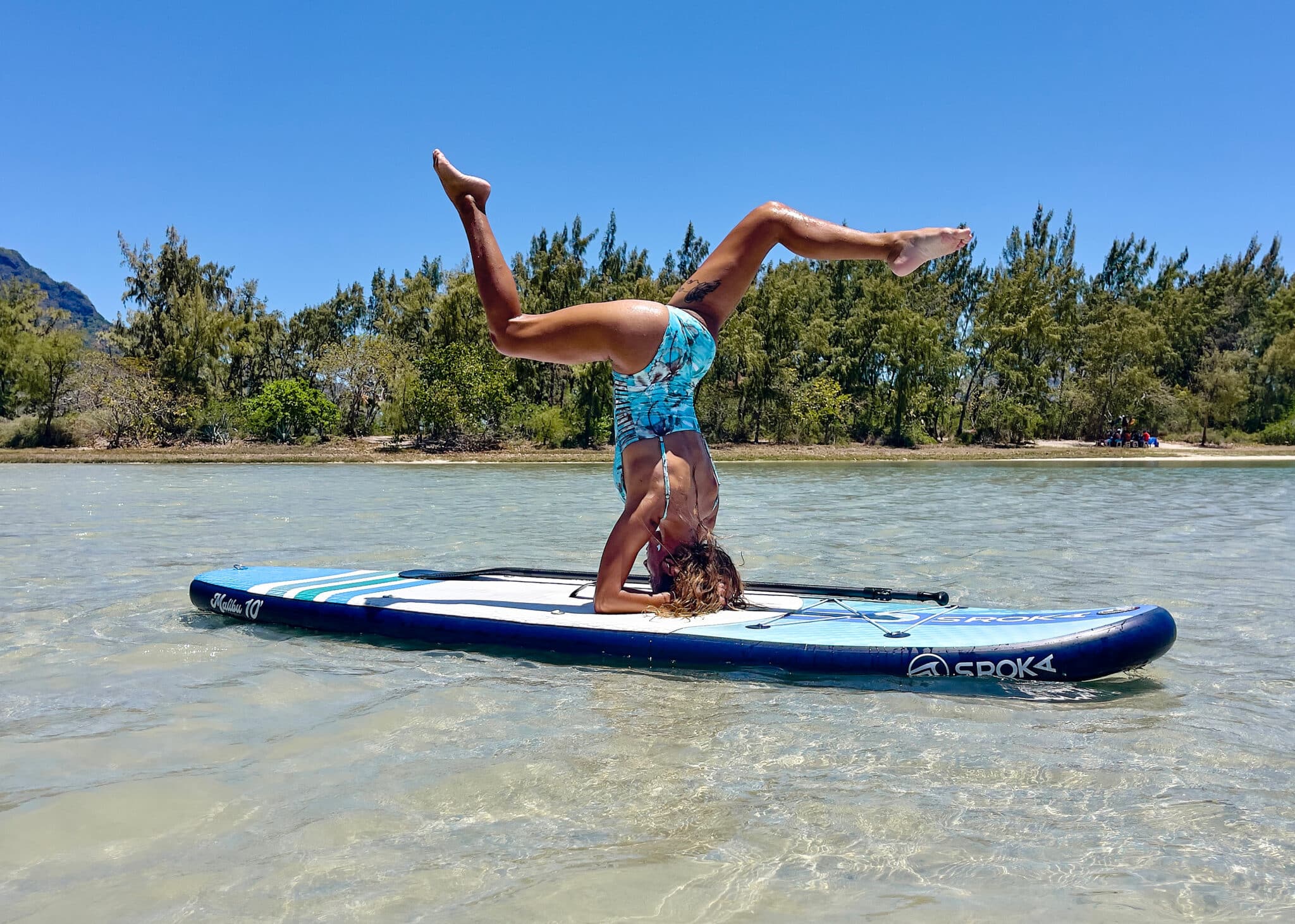
Factors to consider
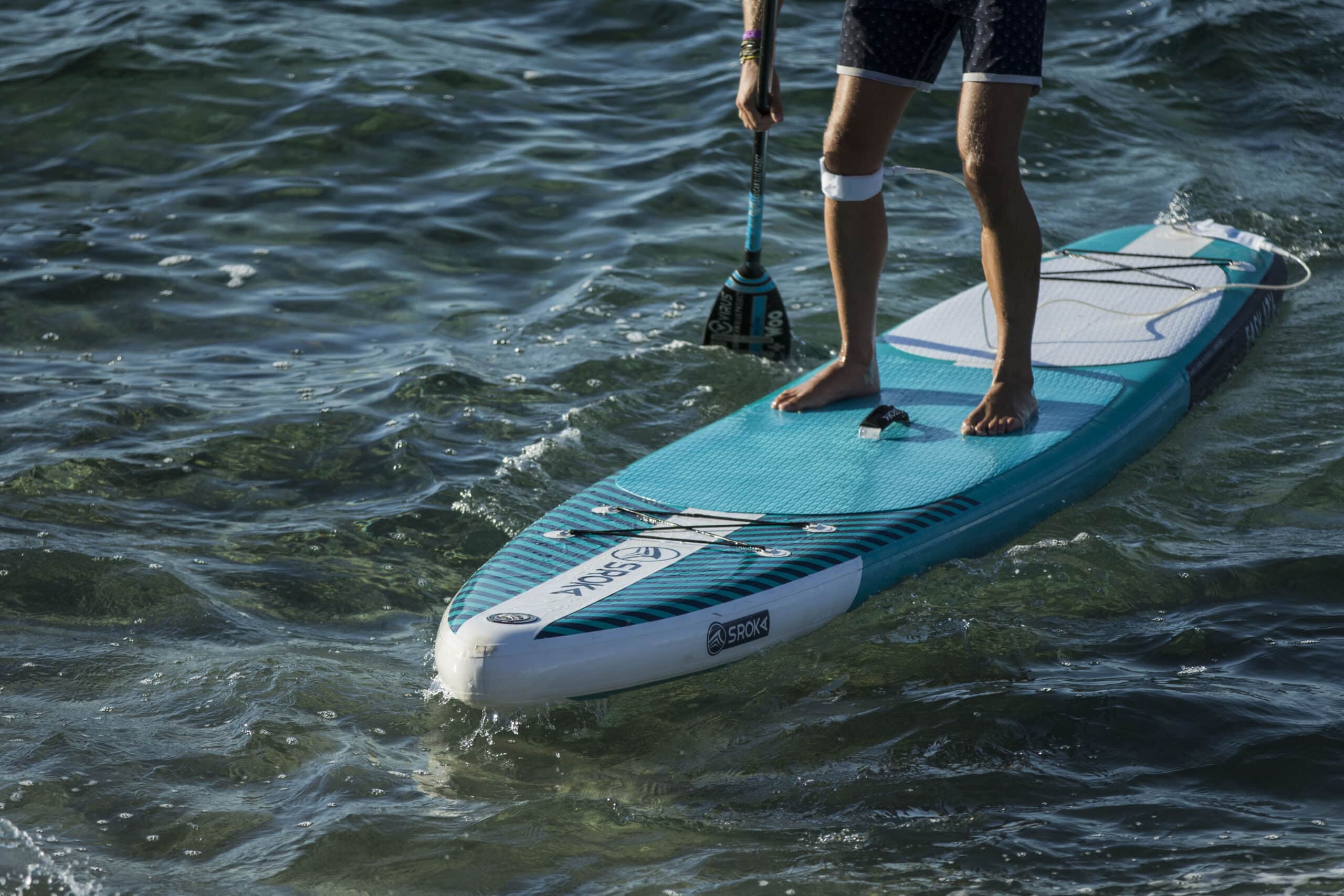
- Weather: Although it may seem obvious, too many people have a hard time estimating wind and sea conditions when they are on land. If you have any doubts and you think that the weather conditions are dangerous (temperature, wind, wind direction, etc.), ask the locals for advice or refrain from doing so.
- Sea conditions, currents, chops, swells and other elements from water conditions may be hazardous or inappropriate.
Conclusion
So, can you paddle everywhere? Actually, yes practically, but it is important to pay attention to the surrounding factors in order to avoid trouble and bad experiences. Always keep in mind that your practice, if you are here, is probably exclusively of the leisure order, so you have no reason to take the slightest risk. Stay wise while going to discover the places that are important to you.
To finish, don’t hesitate to consult our paddle buying guide to help you in your choice of equipment.
If you still have questions about this, or for any other request, please do not hesitate to contact us !
Article you may be interested in
Did you know that paddle boarding is a great way to strengthen your body? Not only does this activity allow you to escape on the …
Are you looking for an inflatable paddle board for the summer to sail at sea or in lakes? The inflatable paddle board really has a …
What is Wing Foil? Wing Foil is the latest in board sports. This consists of manipulating a wing held with both hands (“wing”) with a …

